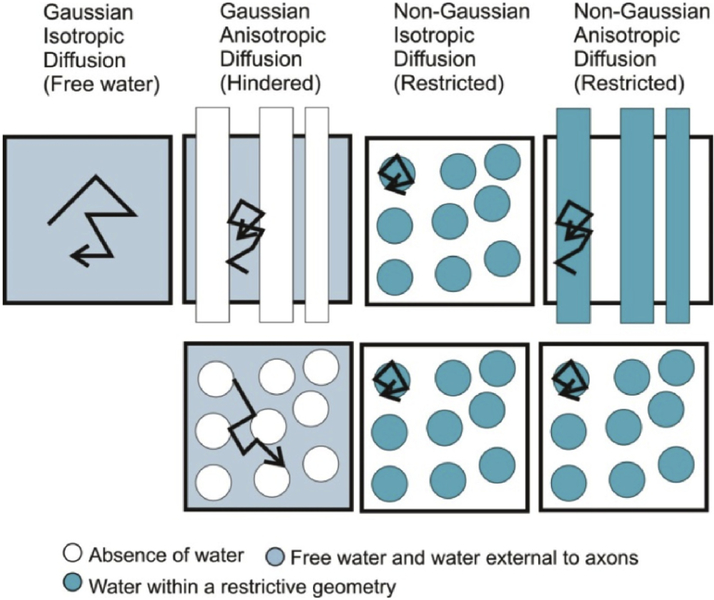Figure 1.
The figure shows examples when the diffusion is Gaussian and non-Gaussian and when it is isotropic and anisotropic. Isotropic diffusion occurs in fluids without barriers or spherically symmetric barriers. Anisotropic diffusion occurs when there is a preferential direction for diffusion. In a geometry with a bundle of cylindrical tubes, diffusion in the fluid outside the tubes and the diffusion of water in the tubes is both anisotropic because the diffusion along the length of the tubes is greater because it is unrestricted as compared to the diffusion perpendicular to the tubes axis. The diffusion in the space outside the tubes can be approximated by Gaussian diffusion while the diffusion within the tubes is bounded by the tube walls and is non-Gaussian. The diffusion in the space external to the tubes is also hindered and the diffusion within the tubes restricted diffusion.

